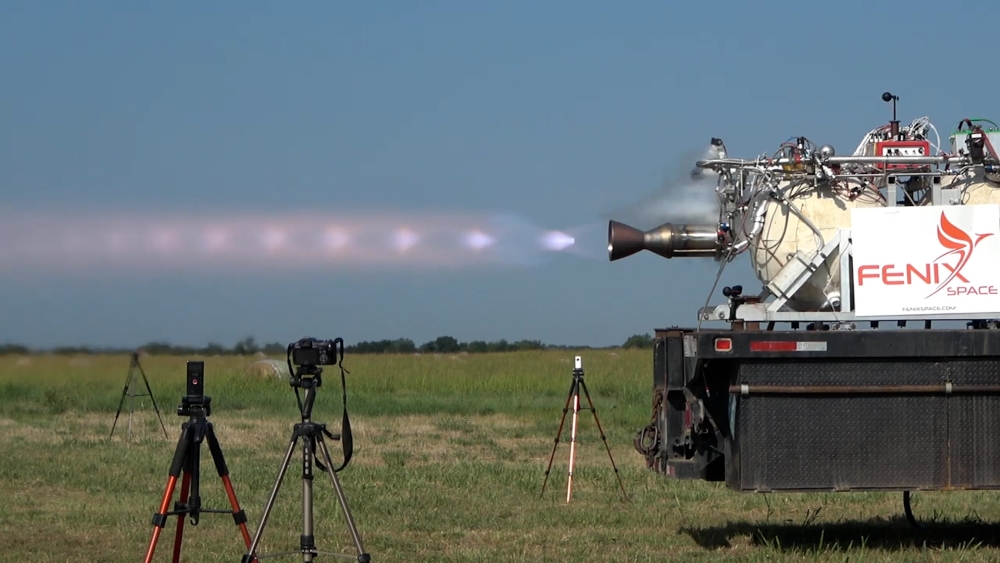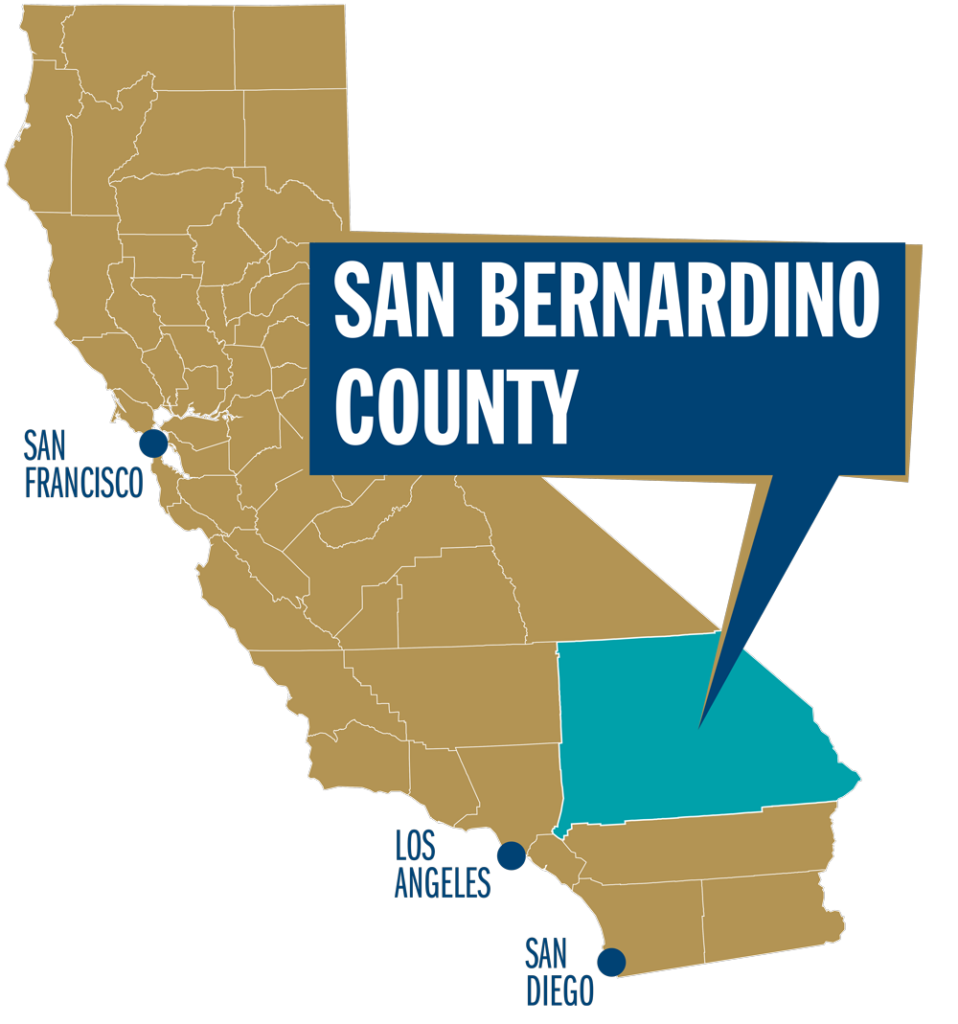Ryvid’s electric bikes are priced to make urban commuting attainable for almost everyone.
Photo courtesy of Ryvid
innovation is more than a motto in San Bernardino County. The application of creative thinking permeates a range of diverse industries in this 20,000-square-mile land of 2.2 million people in inland Southern California.
From an old-world industry like winemaking to new-world sectors like electric motorcycles and space exploration, innovation serves as the backbone of three entrepreneurial businesses that aim to disrupt the status quo and change the world.
Ryvid, Fenix Space and Suveg Cellars all call San Bernardino County home. Located about an hour east of Los Angeles, these startups are carving out niches in competitive industries while adding economic diversity and quality jobs to their communities.
Make travel affordable
No one understands the electric motorcycle landscape better than Dong Tran, founder and CEO of Ryvid, a “light mobility” company that designs and manufactures electric motorcycles to make urban travel both affordable and sustainable. “Our flagship model, the Ryvid Anthem, featuring an aerospace-inspired frame and adjustable seat, along with other standout features, is competitively priced at $6,500, while the Outset comes in at $6,000,” says Tran. “With most electric bikes in the commuter segment priced between $9,000 and $14,000, the Ryvid positions itself as the best choice for the budget-conscious urban commuter, delivering both performance and style without the hefty price tag.”
Tran explains that San Bernardino County was chosen strategically as Raivid’s home of operations. “San Bernardino offers a workforce with deep experience in the aerospace, manufacturing and related industries—skills we can tap into as needed to support Ryvid’s evolving manufacturing goals,” he notes. “This strong industrial infrastructure and access to a skilled workforce provides the flexibility we need to scale efficiently and maintain high manufacturing standards as we move along our growth trajectory.”
He adds, “San Bernardino’s commitment to business growth is a significant asset, with stakeholders such as the Economic Development Agency and the San Bernardino Community College District providing invaluable support. The county’s energy and collaborative spirit aligns perfectly with Ryvid’s values of sustainability and innovation, which also extends to the diversity of our operations.”


Testing the Fenix Space launch system at San Bernardino International Airport.
Photos courtesy of Fenix Space
“Diversity is central to Raivid,” continues Tran. “Our workforce reflects a rich mix of personal and professional experience, and San Bernardino provides a strong pool of talent that helps us build a sustainable future for urban transportation.”
A space odyssey with tow
Jason Lee agrees. As CEO of Fenix Space, Lee leads a team of engineers and technicians who strive to change the trajectory of spaceflight. “We’re creating a real launch platform that allows very fast launch of payloads on spacecraft into orbit,” he says. “We are a spin-off from another space company and use the same tow launch technology to address the commercial space markets and hypersonic testing.”
Fenix’s approach is to launch a rocket to an altitude of 60,000 feet from a wing booster that is first towed 40,000 feet behind a commercial airliner. The system is designed to produce better performance at lower cost than traditional rocket-powered space launches.
Fenix already has a contract to develop hypersonic and high-cadence aerial test capabilities for the Pentagon. Other partners include NASA, the Air Force Research Laboratory and the US Space Force.
Fenix is an independent arm of Kelly Space & Technology, which was the first commercial tenant at San Bernardino International Airport, a commercial airport formerly known as Norton Air Force Base.
“When Norton closed, it created a lot of ramifications,” says Lee. “Kelly Space wanted to use the existing infrastructure at the air base. When they developed the old Air Force base into an international airport, some key Air Force facilities were upgraded into testing facilities. These expensive testing capabilities have been developed here since the early 2000s. The processing capabilities are also here.”
Fenix is co-located with Kelly Space. “We have a core team of about 20 members,” Lee says. “In the next 12 months, we expect to double the number of staff. We are in a 20,000 square foot facility but need to expand to over 30,000 square feet. We are looking at potential locations around San Bernardino for additional space.”
Lee says that “we are able to hire talent through referrals from our existing team members. We had interns and new hires come from California State University-San Bernardino. We have technical training to work at the airport. When you consider the aggregation of aerospace companies in Los Angeles, El Segundo, and Long Beach, the concentration of the aerospace industry in the region is significant. Our goal is to build a space technology company in San Bernardino and grow it here.”

“When you consider the clustering of aerospace companies in Los Angeles, El Segundo and Long Beach, the concentration of the space industry in the region is significant. Our goal is to build a space technology company in San Bernardino and grow it here.”
— Jason LeeCEO, Fenix Space
The company’s goal is to advance quickly. “We will do a flight demonstration of one-third scale autonomous technology at the end of the first quarter of 2025,” adds Lee. “We will build a rocket engine and test it next year. We will do our flight test in 2026. This will be our first full-scale system. Our longer-term plans are to scale up sequentially with the Fenix 1, 2 and 3 systems over the next decade.”

Fermentation field day
A little closer to the ground, Suveg Cellars challenges the status quo of the vaunted California wine industry. Located in the Yucaipa Valley, the 10-year-old Suveg played an important role in the Yucaipa Valley Wine Alliance, earning its first American Viticultural Area (AVA) designation.
Devin Cohen, winery director at Suveg, says the AVA designation will allow the Yucaipa Valley to become a major player in Southern California’s highly competitive wine business. “Nestled in the foothills of the San Bernardino Mountains, Yucaipa is a unique environment in the county for growing, harvesting, barreling and aging fine wine,” he says. “The AVA designation is transmitted by the federal government through rules adopted by the U.S. Treasury Department. It’s a five-year process.”
Only 133 regions in California and only 300 nationwide have earned the AVA designation. For Yucaipa, the award is a game-changer, Cohen says. “It’s instructive to look at our neighbors to the south in Temecula,” he says. “They got their AVA about 40 years ago. Today, this region generates an estimated annual economic impact of $2.7 billion. Over 17,000 wine-related jobs are in the Temecula Valley. More than $1 billion in wages were paid there last year in the wine business.
Winning the AVA opens doors for Yucaipa to recruit and hire more cellar masters, tasting room managers and related winemaking jobs. “Adding jobs to the wine industry has a destination-creating effect,” says Cohen. “People come to wine regions to taste wine and spend dollars.”
How important is the California vineyard business? “Behind entertainment, it’s the second largest industry in the state,” Cohen says. “Increased visits to the area represent an increased tax base. More money in public coffers means more public services. People who own property here will see a significant increase in their property values.”
The region is also affordable, notes Cohen. “We’re 75 miles directly east of LA and right off I-10 between Ontario and Palm Springs,” he adds. “I-10 runs through the valley. We are 20 minutes from Redlands and Oak Glen. Riverside is 25 minutes away; and is 45 minutes to Rancho Cucamonga, Corona or Palm Springs.”
The alliance’s goal is to see more wineries open in the valley, Cohen says. “To make a small fortune in the wine region, you have to start with a very big one. But once the wineries start moving, none of them are in danger of running out of money. We will work with major investors and local authorities to create incentive programs. If it works, we have a wine industry that will last for hundreds of years.
From the grape fields of Yucaipa to outer space, San Bernardino County businesses are changing the destinies of local residents and opening new frontiers of exploration.

This investment profile was prepared under the auspices of San Bernardino County. For more information, contact the county’s Economic Development Department at 909-387-4460. On the web, go to www.SelectSBCounty.com.
